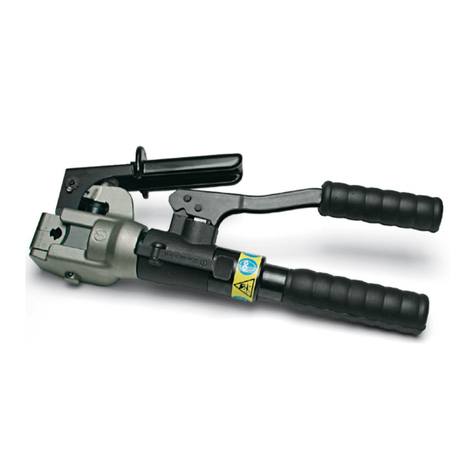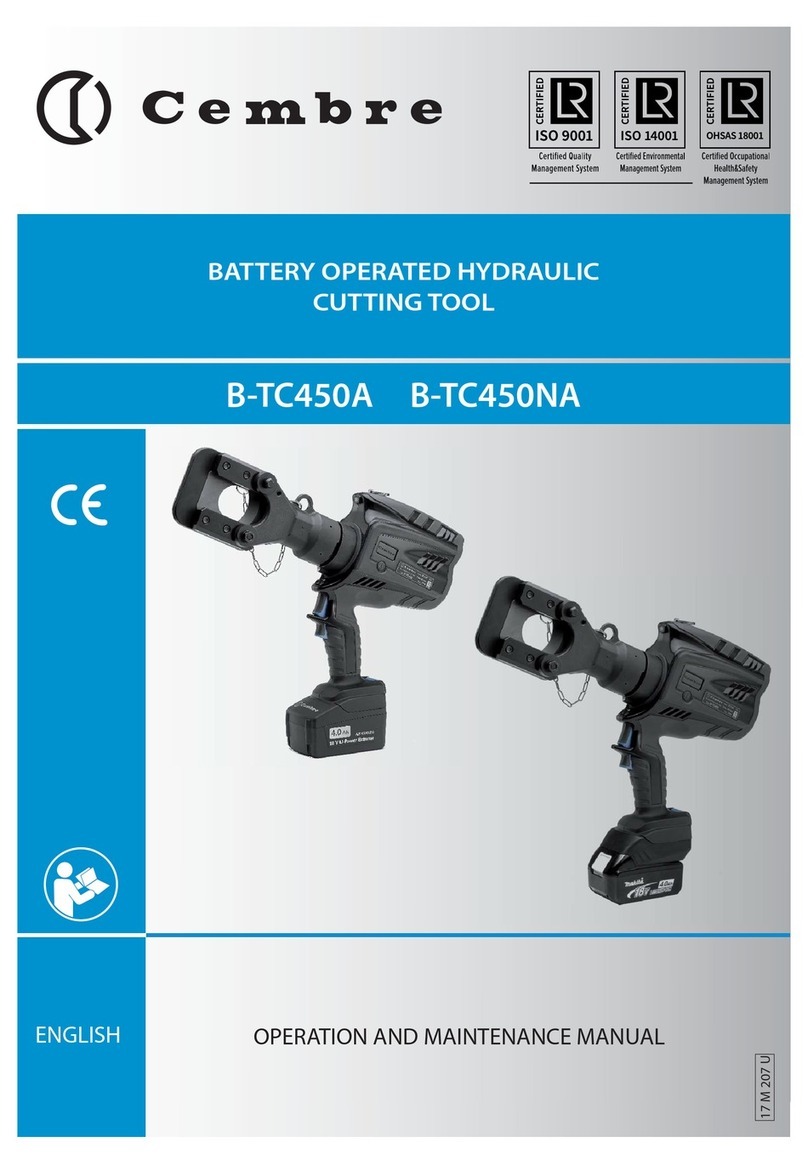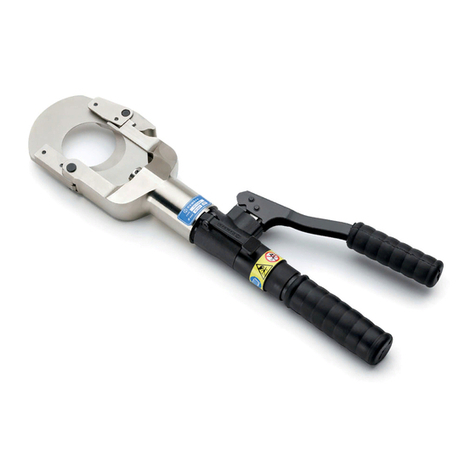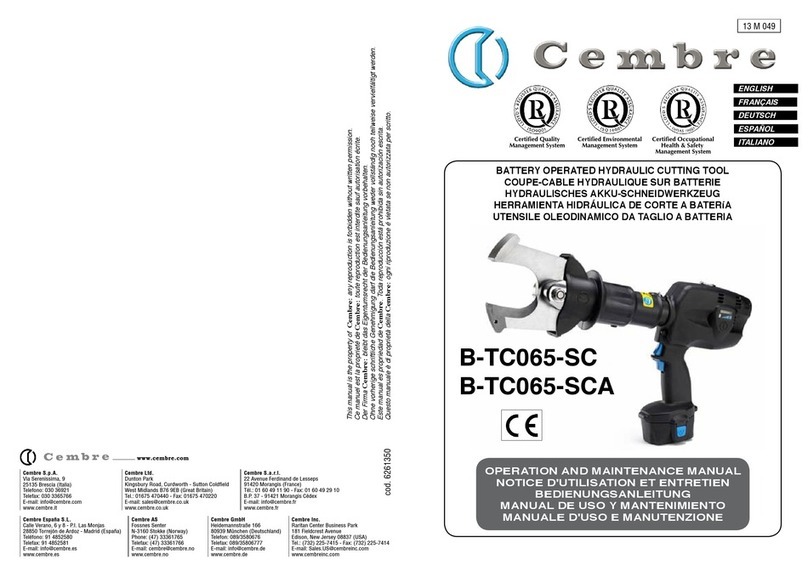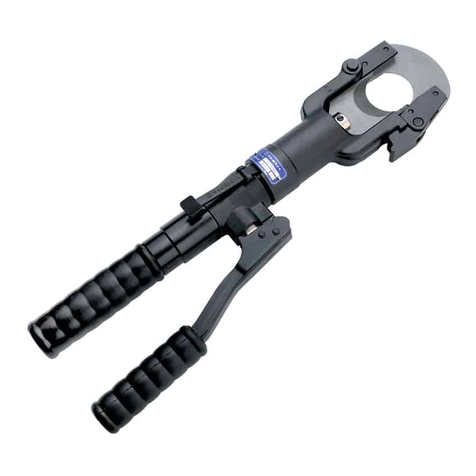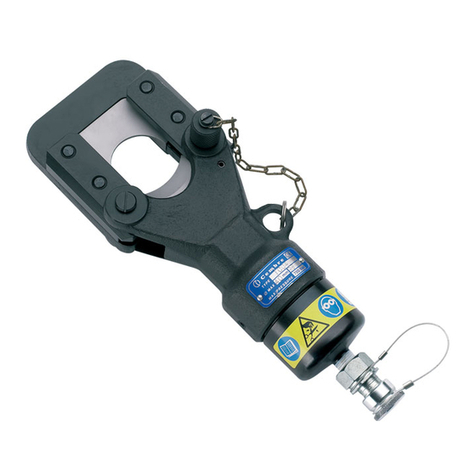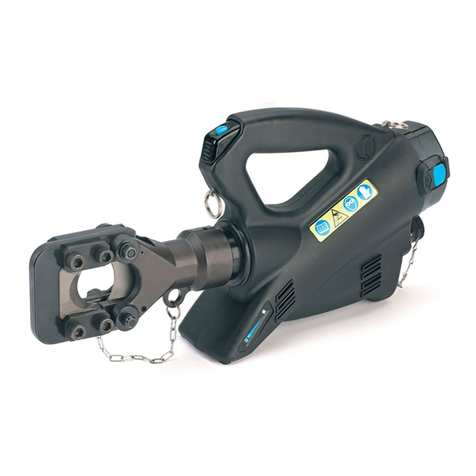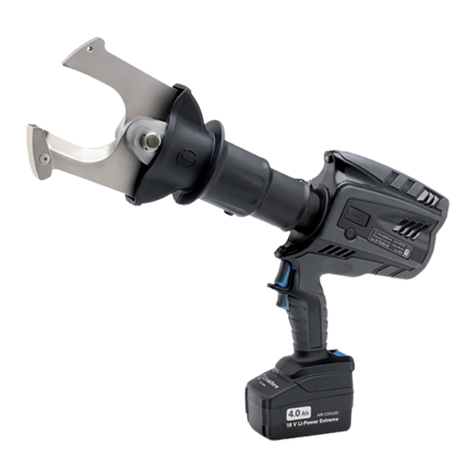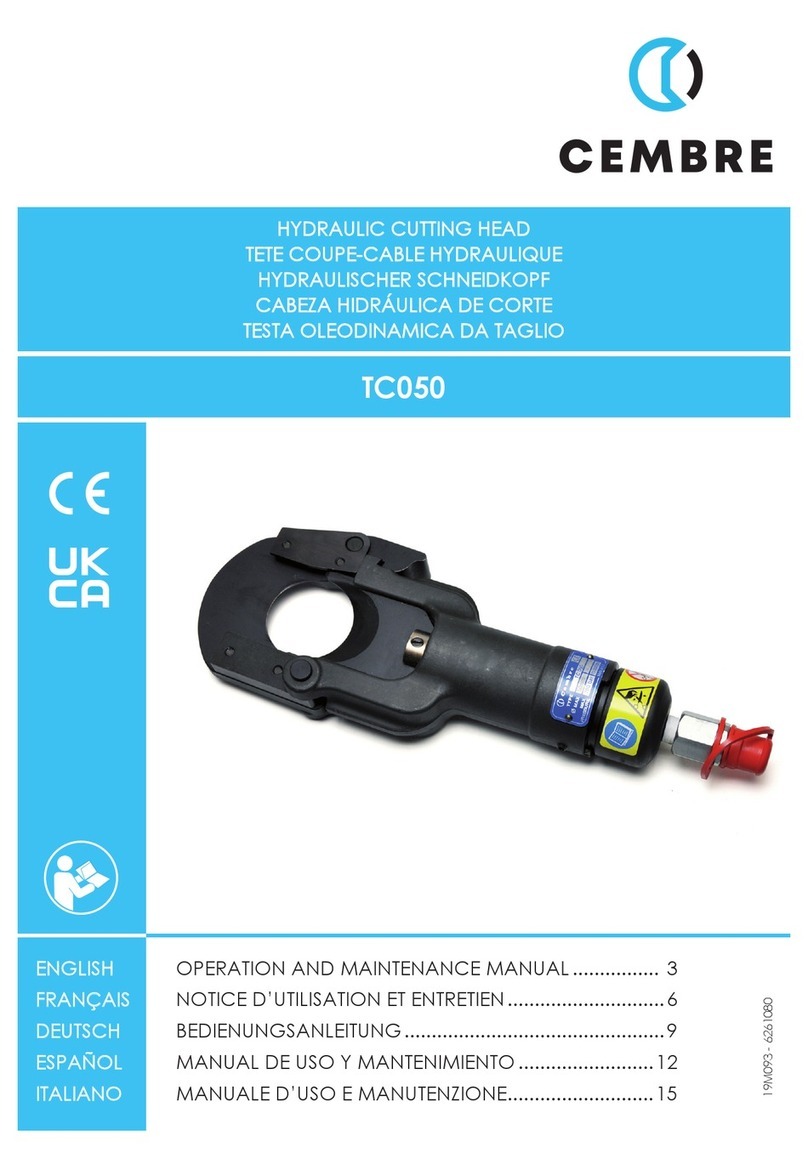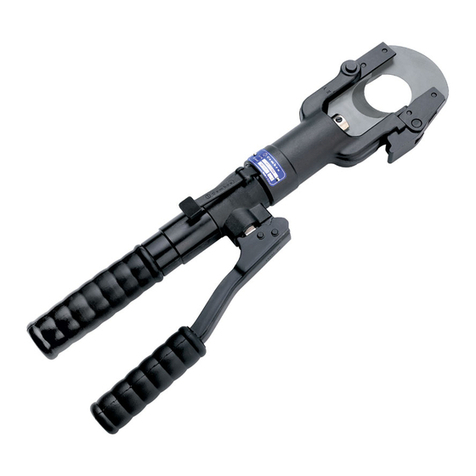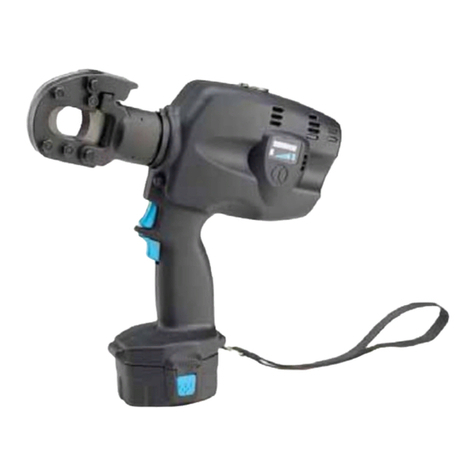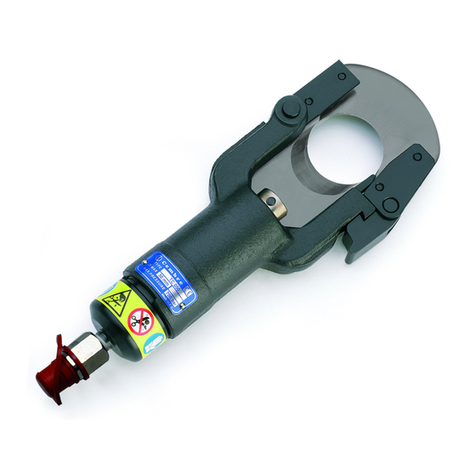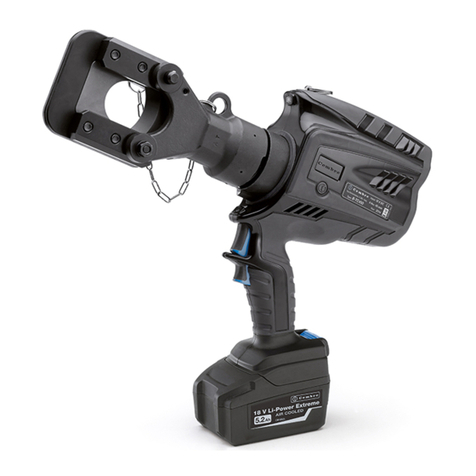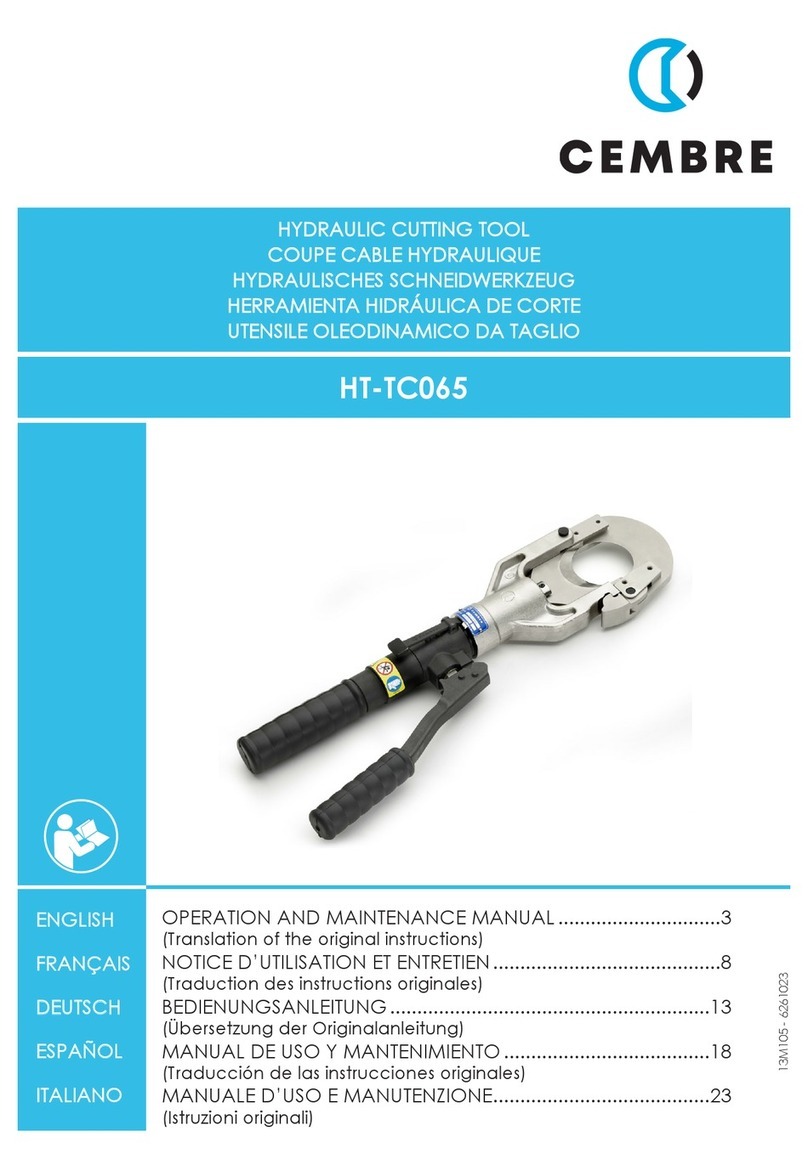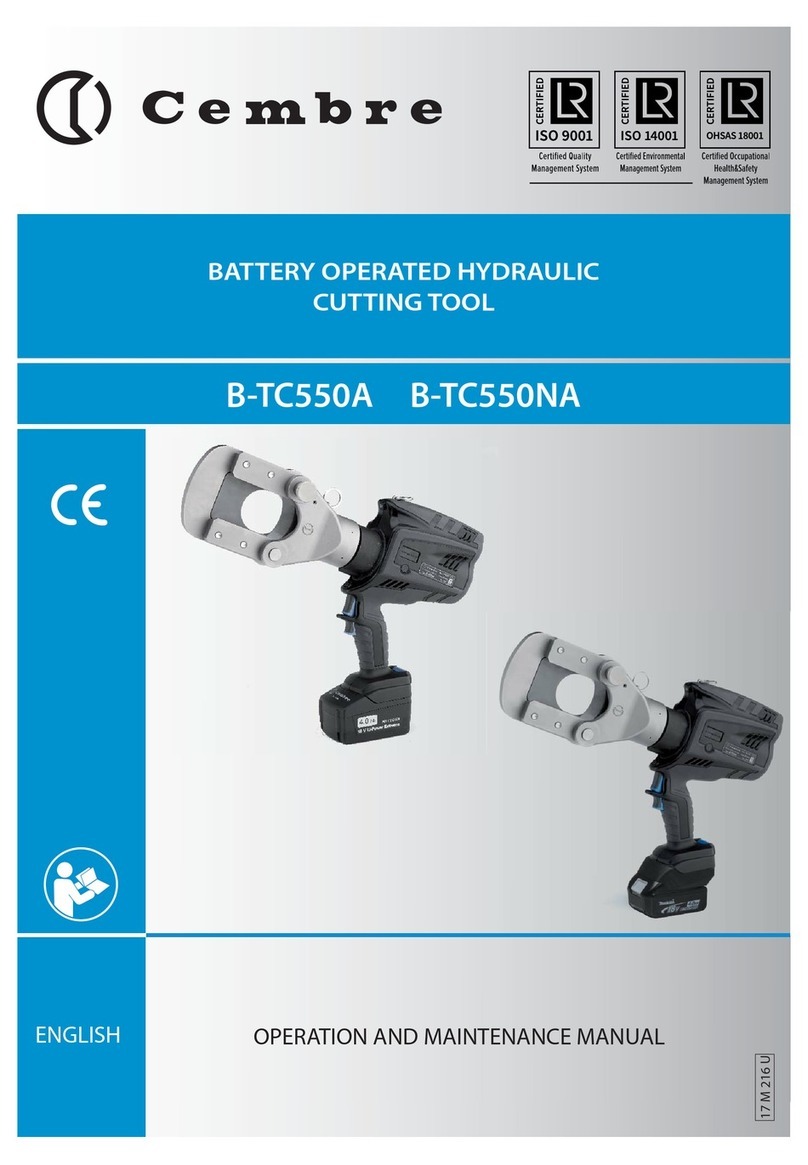
7
2.2) Setting
Insert the conductor between the blades, up to the desired cutting point (Ref. to Fig. 3).
For a running conductor, release the latch (4) and open the tool head (Ref. to Fig. 3a).
Fully retract the lower blade (3) before attempting to open the tool head (Ref. to § 2.6).
With the conductor on the lower blade (3), close the tool head and fully secure the latch (4).
Before commencing the cutting operation ensure that the latch (4) is fully secured: partial
closure may damage the tool head.
2.3) Blade advancement
Press the operating button (5) (Ref. to Fig. 3) to activate the motor-pump, the ram will gradually
move forward until the lower blade (3) touches the conductor.
To halt the advancement, release the button (5) and the motor will cut out.
2.4) Cutting
Firmly hold thetoolandoperatethebutton(5)togradually move thelowerblade (4)to cuthrough
the conductor.
When the cut is performed, release the button (5), otherwise after the maximum pressure relief
valve has activated the motor will stop automatically.
2.5) LED Worklights
Whilst the tool is in operation, the work area is illuminated by two high luminosity LED Worklights
that switch o automatically at the end of the cycle.
2.6) Blade retraction
By operating the pressure release button (6), the ram will retract and open the lower blade.
2.7) Battery status
The battery is equipped with LED indicators that indicate the
remaining battery life at any time by pressing the adjacent but-
ton (P):
4 LEDs illuminated: fully charged
2 LEDs illuminated: 50 % capacity
1 LED flashing: minimum charge, replace the battery
Worklights (1) illuminated combined with an alarm au-
dible when the operating button (5) is pressed (Ref. to Fig.
5), indicate that the battery voltage has dropped below a
minimum safety threshold; under these conditions the tool will not start, and it is necessary to re-
charge or replace the battery.
The approximate time to fully recharge a battery is about 80 minutes.
After each working cycle, and after the extraction of the battery from the tool, an integrated
battery cut-o device will operate after 70 s approx. Then the LED nearest to button (P) will
ash 5 times each 14 s approx. The battery will be reactivated when it is reintroduced into
the tool and the operating button is pressed.
2.8) Using the battery charger
Carefully follow the instructions in the battery charger user manual.
P
